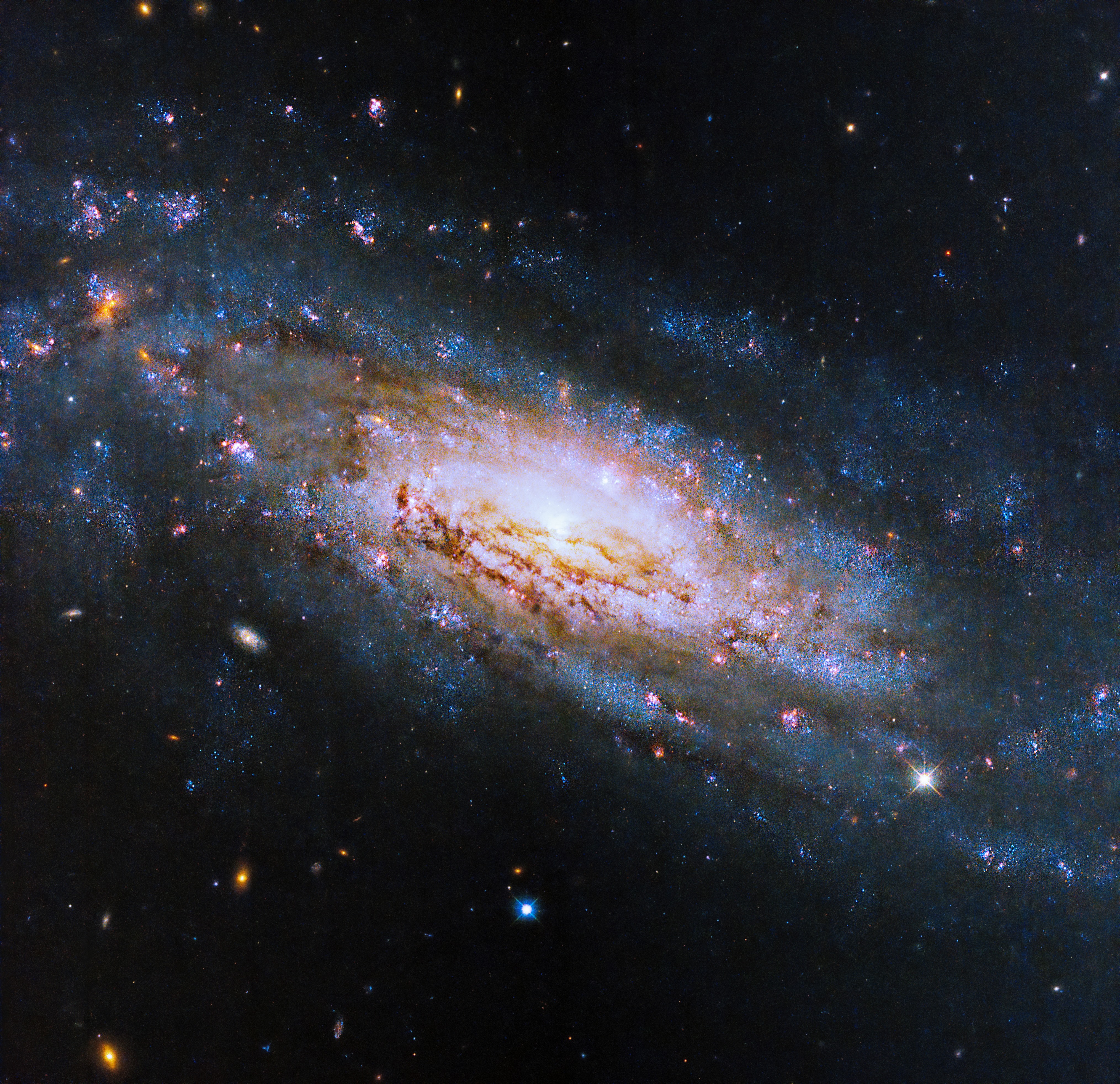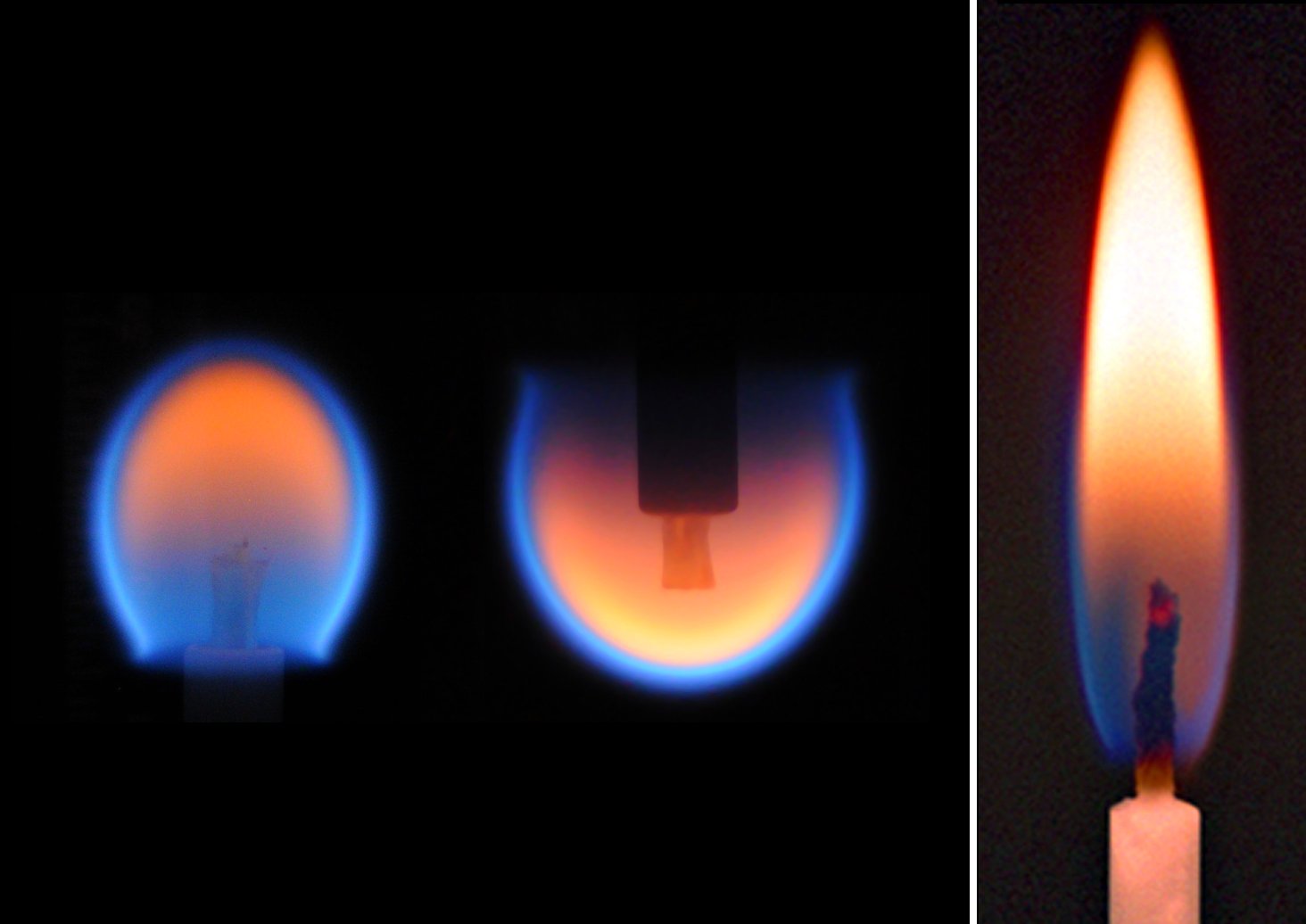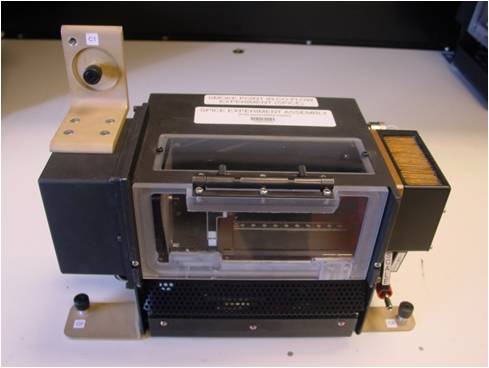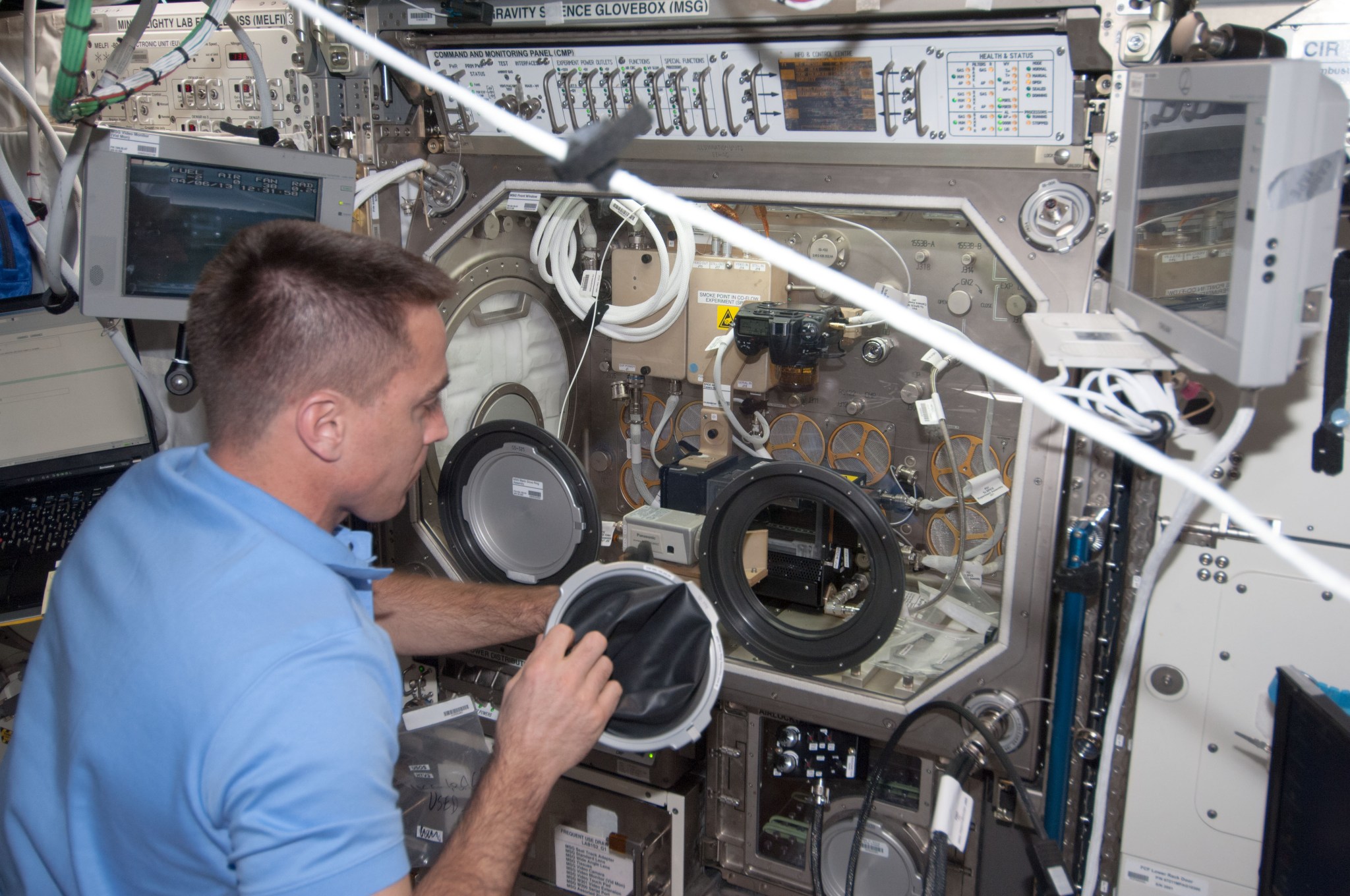The mesmerizing power of fire keeps researchers returning to the lab to understand the fundamental combustion science behind it. Combustion has powered our world and consumed scientific attention for years, both on Earth and in space. Fire continues as the focus with the Burning and Suppression of Solids-II (BASS-II) experiments, which recently launched to the International Space Station aboard the Orbital 1 cargo resupply mission.
Designed by researchers at NASA’s Glenn Research Center in Cleveland, BASS-II is scheduled to operate through August 2014. Through a series of experiments, scientists will investigate the combustion of a variety of solid materials, including plastic and fabric samples with different geometries.
Fabric sheets and plastic slabs, cylinders and spheres will be burned in the station’s Microgravity Science Glovebox (MSG). This contained facility provides an environment that allows astronauts to burn open flames safely aboard station for scientific investigation.
An earlier BASS study, which used the MSG and ran on the space station in 2012, provided an initial look at burning materials with different shapes. Researchers used that investigation to assess the effectiveness of nitrogen in suppressing microgravity fires. BASS-II takes that research even further with five separate investigations overseen by five different research teams. While each investigation has its own goal (flammability, flame spread, extinguishment, etc.), they share the same objective: a better understanding flame behavior in space and on Earth.
“These are the thickest samples we’ve flown to date,” said Sandra Olson, spacecraft fire safety researcher and BASS-II principal investigator at Glenn. “We’re looking to see how long it takes to reach a steady-state flame. How long it takes them to extinguish. We want to learn how to screen materials for future flights. A primary goal of BASS-II is improved spacecraft fire safety, improved understanding of combustion in space and how to avoid it. If you’re on a mission far from Earth, a fire can be catastrophic. We want to select the safest materials.”
The aim is to better understand the basic structure of flames and fires. The results of BASS-II should help researchers refine computational models and theories about flame behavior. To produce better models, scientists need reliable data. Earth-based flame studies are greatly affected by gravity. Buoyancy, which makes hot gasses rise, usually causes flame flickering even in a still environment. If researchers can reduce buoyancy to near zero, they have the opportunity to study a range of flame behavior that may be concealed by the influence of gravity.
“If we eliminate gravity, we turn off a confounding factor, buoyancy,” said Olson.”If we decouple buoyancy from other influences we can get a better understanding of flame behavior.”
Drop towers and microgravity aircraft can provide short bursts of microgravity, 5 to 20 seconds. However, not only are the experiments limited by these short bursts of time, they may also be affected by g-jitter, that is oscillations in the apparent gravity caused by vibrations in the aircraft and hardware. In space, researchers have the benefit of longer tests without g-jitter.
“Using the station breaks the scientific process down to its simplest components. Information from studies in space gives theorists and those who design models an opportunity to improve those models and theories,” said Paul Ferkul, BASS-II Project Scientist at Glenn. Ferkul was also a principal investigator for the earlier BASS study
Results from BASS-II will contribute to the combustion computational models used in the design of fire detection and suppression systems both in space and on the ground. While spacecraft fire safety is a primary concern for researchers in BASS-II, the work from space-based studies can lead to significant improvements on Earth.
Flame studies can help improve how we burn and extinguish fires on Earth. It can produce greater efficiency for our furnaces, aircraft and cars.
“The natural side effect of producing more efficient combustion is you reduce some of the impurities and produce a ‘greener’ flame,” said Ferkul.
And that is the double benefit of space-based research. While the basic science is significant, by doing research in space, life can be improved on Earth.



























